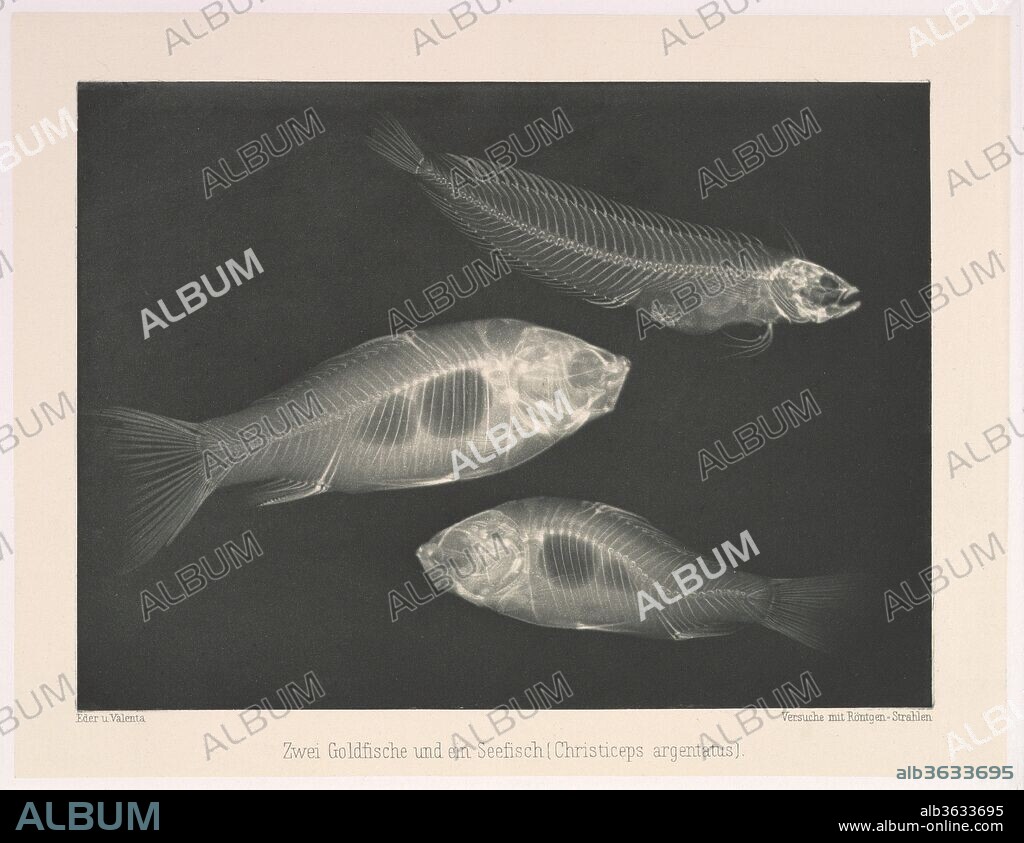alb3633695
JOSEF MARIA EDER, EDUARD VALENTA. Zwei Goldfische und ein Seefisch (Christiceps argentatus)

|
Zu einem anderen Lightbox hinzufügen |
|
Zu einem anderen Lightbox hinzufügen |



Haben Sie bereits ein Konto? Anmelden
Sie haben kein Konto? Registrieren
Dieses Bild kaufen

Titel:
Zwei Goldfische und ein Seefisch (Christiceps argentatus)
Untertitel:
Siehe automatische Übersetzung
Zwei Goldfische und ein Seefisch (Christiceps argentatus). Artist: Josef Maria Eder (Austrian, Krems an der Donau, 1855-1944 Kitzbühel); Eduard Valenta (Austrian, 1857-1937). Dimensions: Image: 4 15/16 × 6 9/16 in. (12.5 × 16.6 cm)
Plate: 5 13/16 × 7 9/16 in. (14.7 × 19.2 cm)
Sheet: 13 7/8 × 19 5/8 in. (35.3 × 49.9 cm). Date: 1896.
Eder was the director of an institute for graphic processes and the author of an early history of photography. With the photochemist Valenta, he produced a portfolio in January 1896, less than a month after Wilhelm Conrad Röntgen published his discovery of X-rays. Eder and Valenta's volume, from which this plate derives, demonstrated the X-ray's magical ability to reveal the hidden structure of living things. Human hands and feet, fish, frogs, a snake, a chameleon, a lizard, a rat, and a newborn rabbit are all presented in exquisitely printed photo-gravures, as are carved cameos and an assortment of natural materials. In an era when photography's ability to accurately depict the visible world had become commonplace, this newfound capacity to record the invisible opened up a host of possibilities, both scientific and aesthetic. The careful compositions and shocking appearance of these "Experiments in Photography" link them to the previous century's tradition of natural-history illustration and point toward the experiments of New Vision photographers in the 1910s and 1920s.
Technik/Material:
Photogravure
Museum:
Metropolitan Museum of Art, New York, USA
Bildnachweis:
Album / Metropolitan Museum of Art, NY
Freigaben (Releases):
Model: Nein - Eigentum: Nein
Rechtefragen?
Rechtefragen?
Bildgröße:
4256 x 3284 px | 40.0 MB
Druckgröße:
36.0 x 27.8 cm | 14.2 x 10.9 in (300 dpi)
Schlüsselwörter:
 Pinterest
Pinterest Twitter
Twitter Facebook
Facebook Link kopieren
Link kopieren Email
Email
